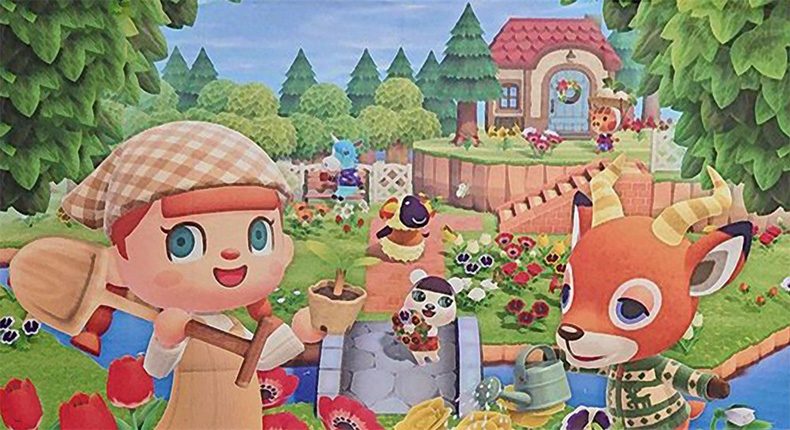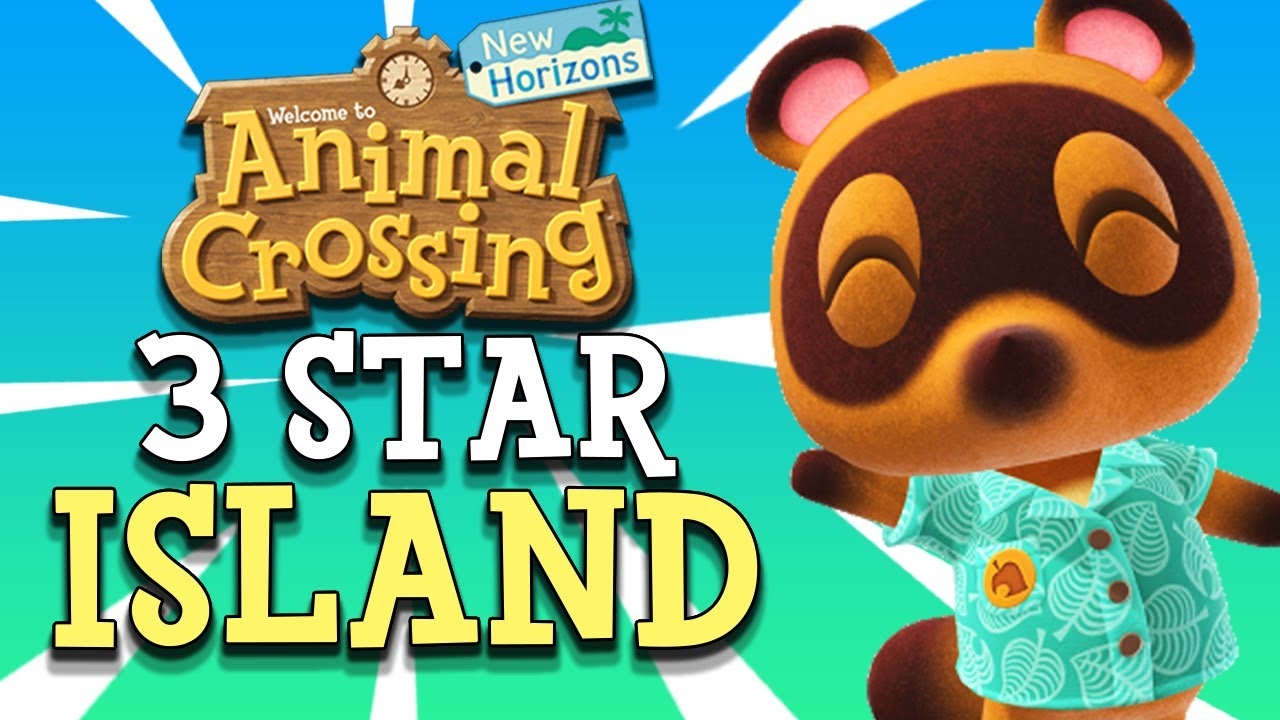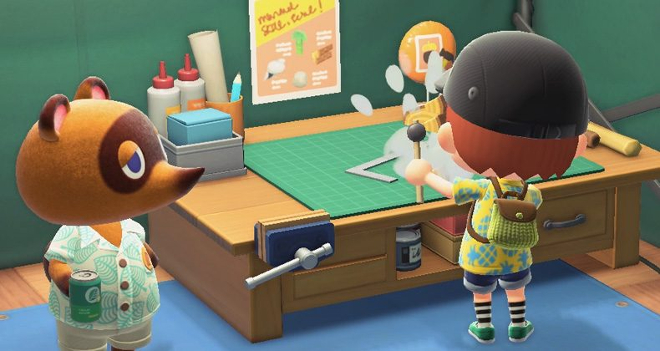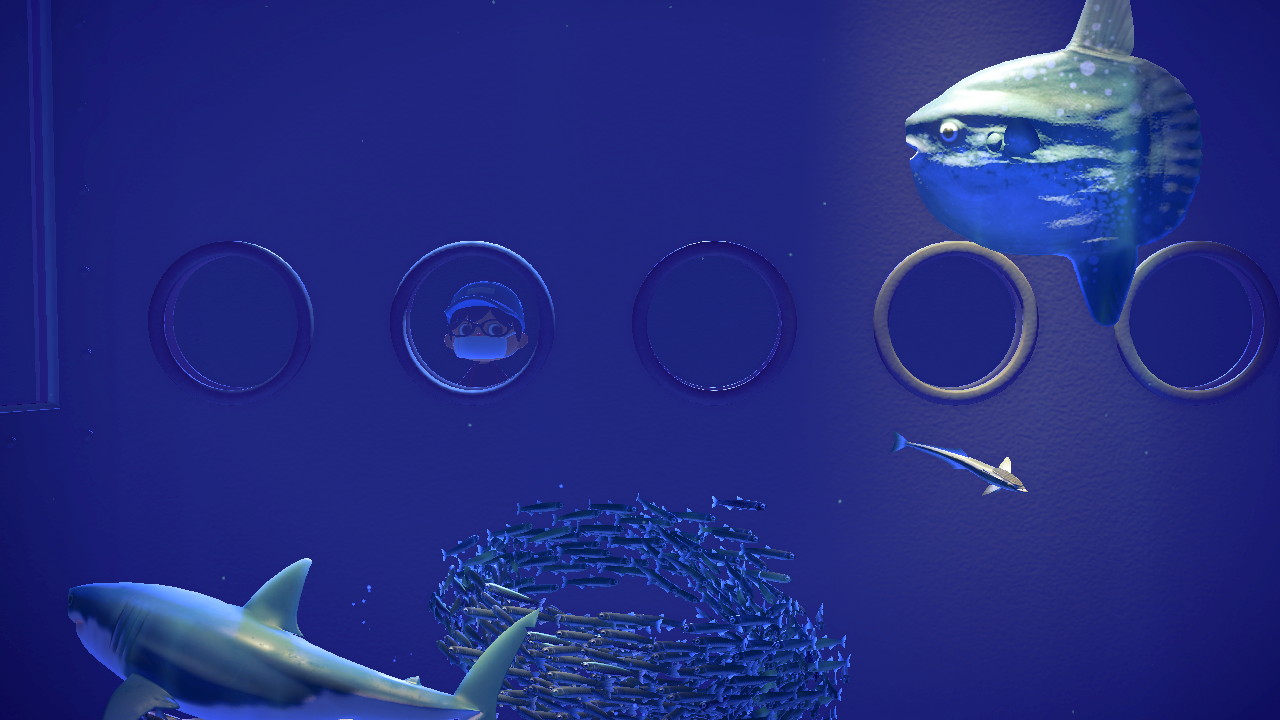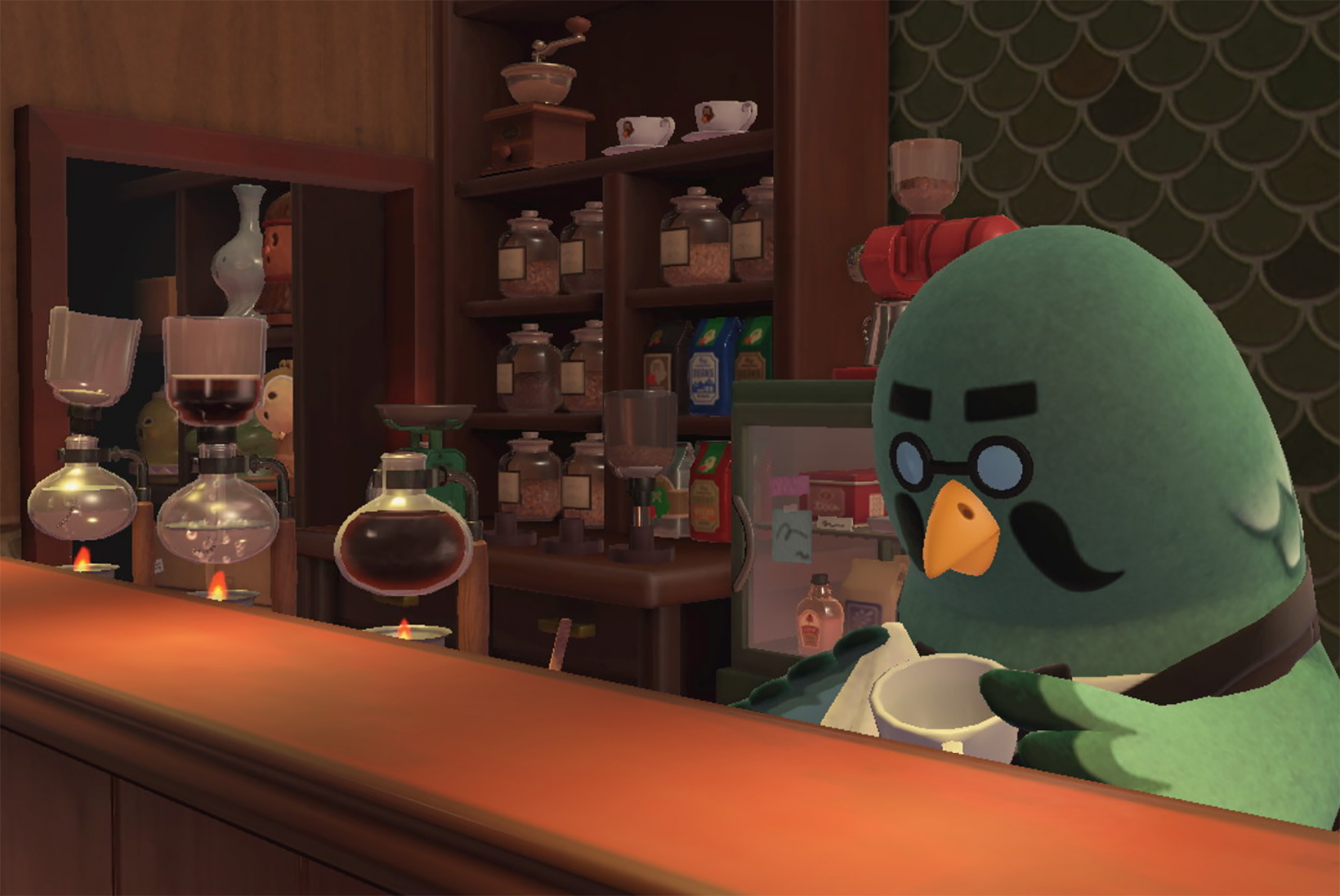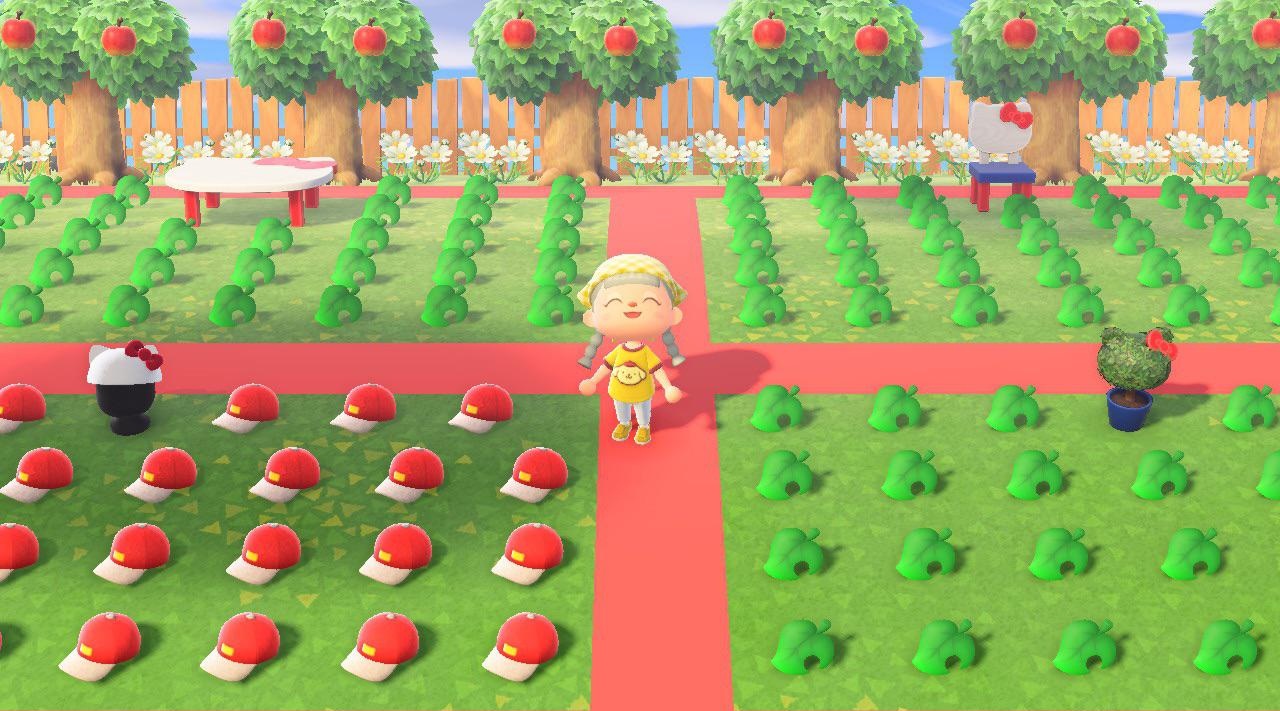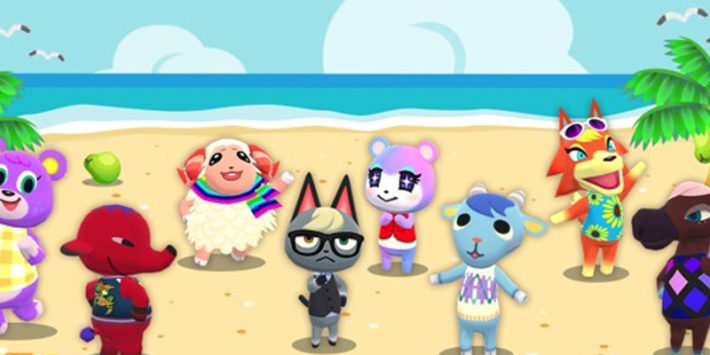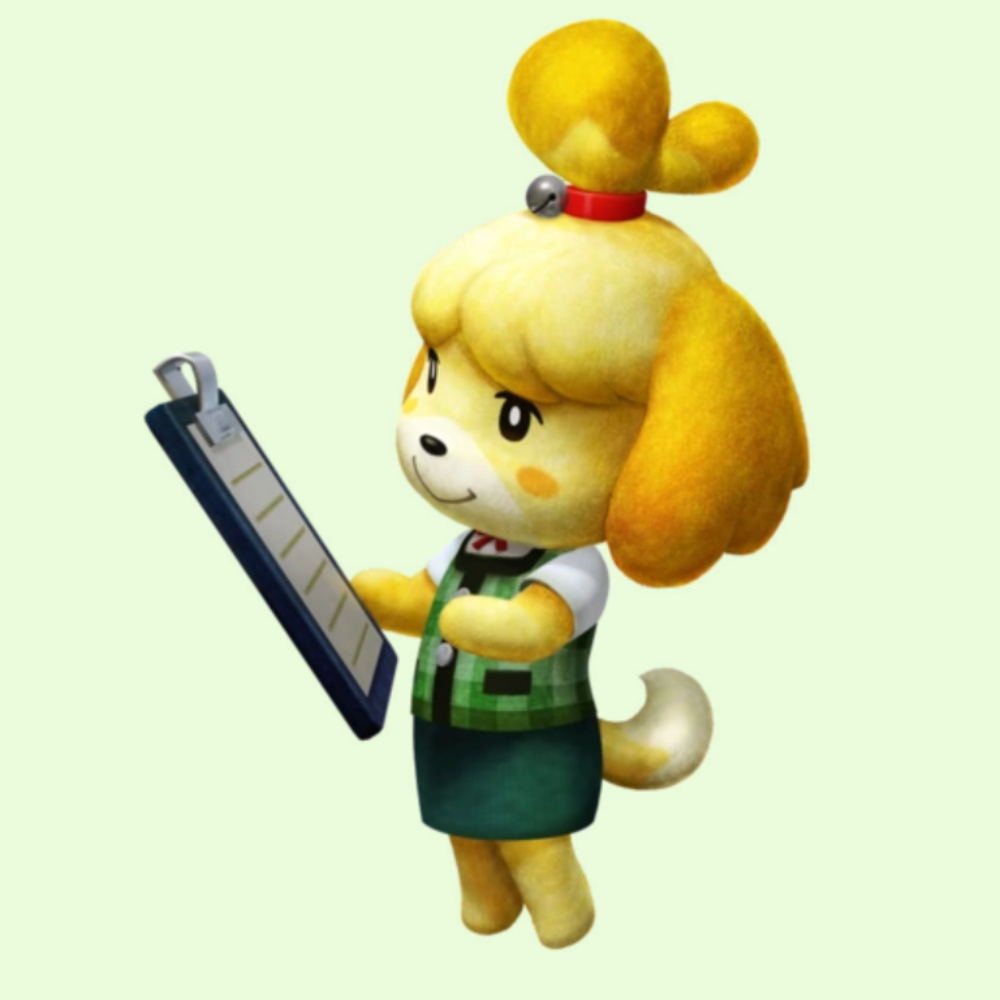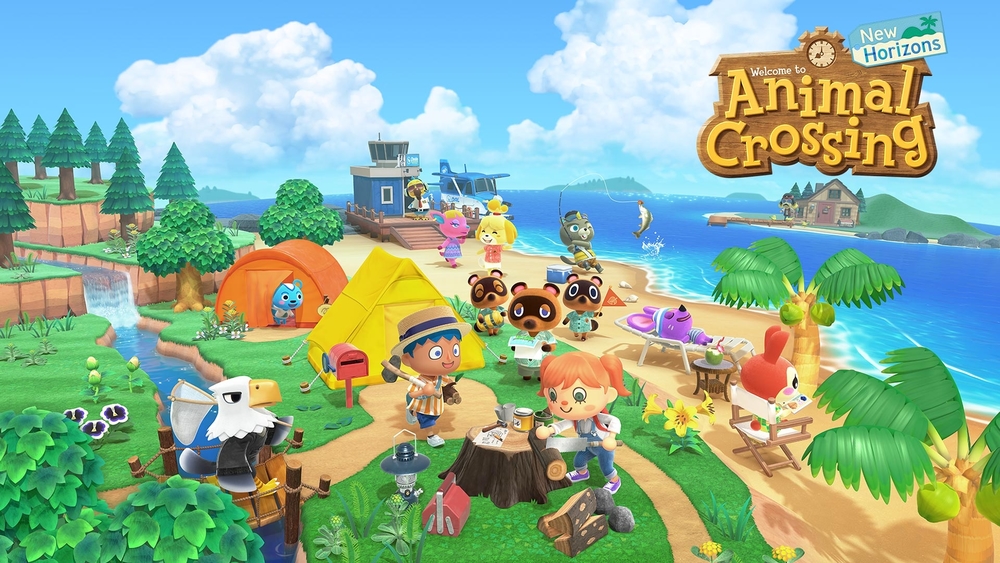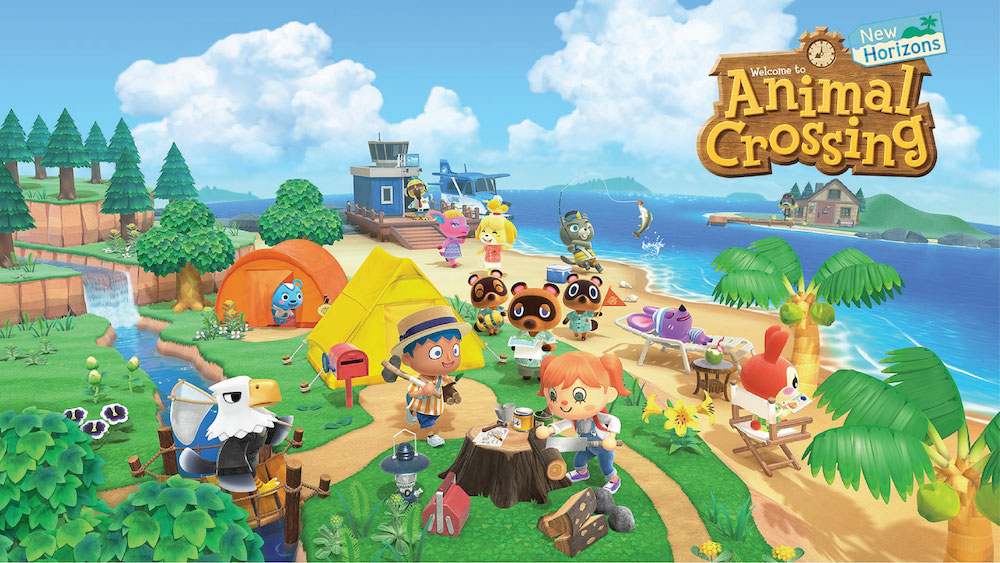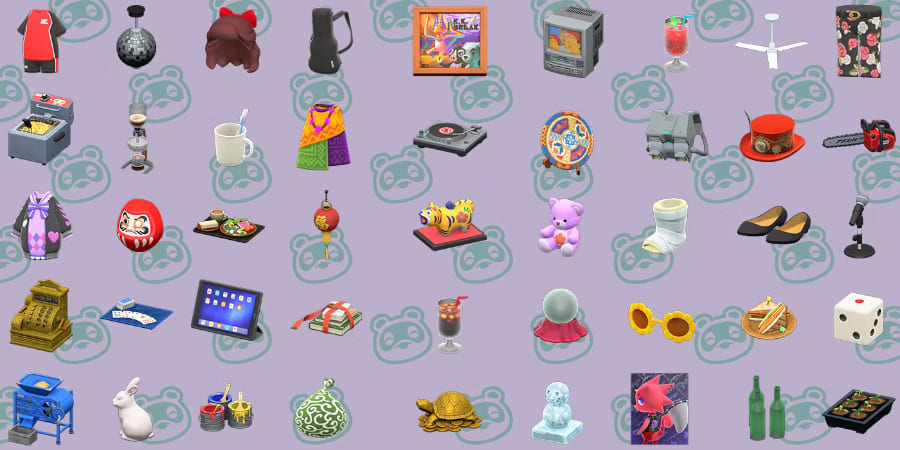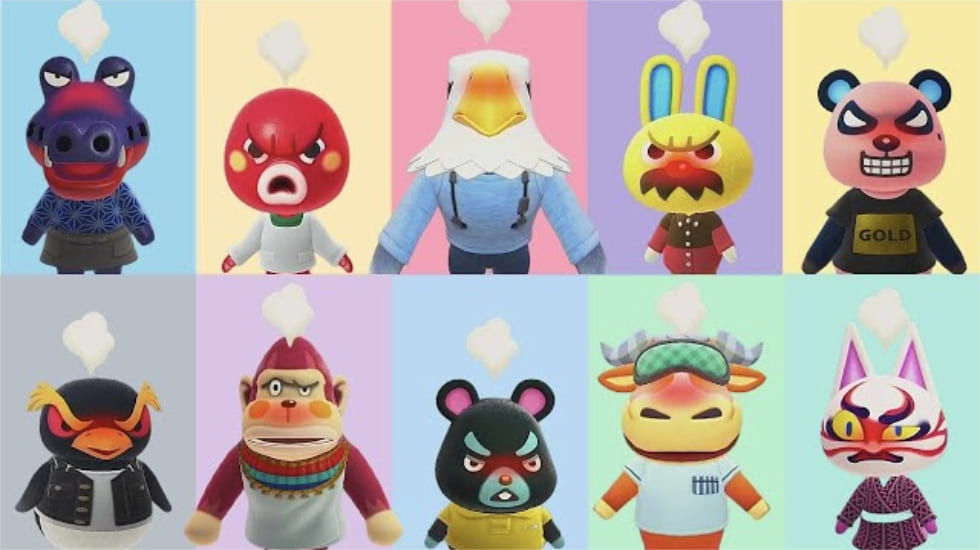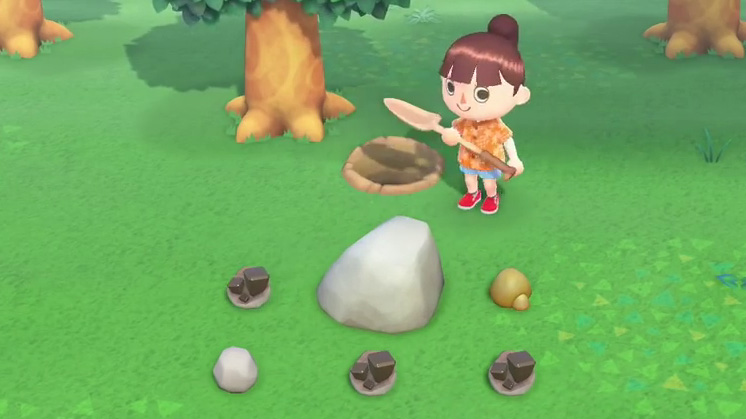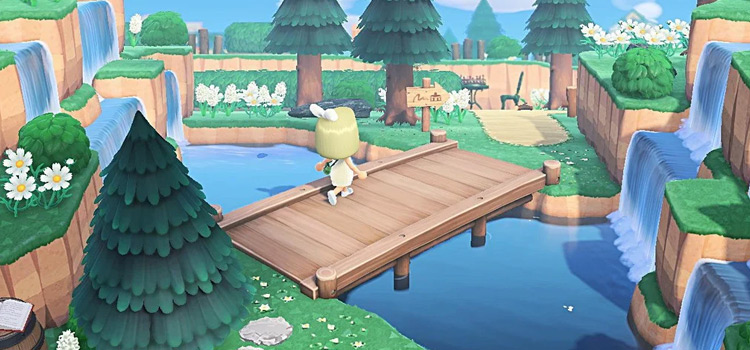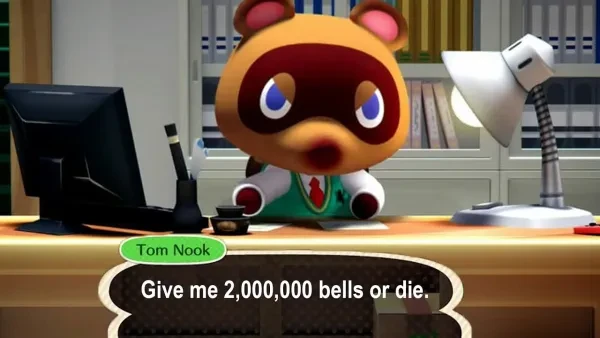
Animal Crossing: New Horizons may be aging, but the game is still beloved by people the world over, and new players are still joining the ranks. If you’re just getting into the game now, you probably want to maximize your income early. Well, never fear; I’m here to share with you the very best ways of making money, and the best news of all is that you can start using most of these methods day 1, and all of them within the first week, easily.
Also, while none of these methods technically requires another player, some of them get way more lucrative if you have other islands you can visit on the regular, so if you’re more of a social gamer, get that friend list popping; you’ll not only have more fun, but you’ll make more moolah, too.
5) Fungible Fruit
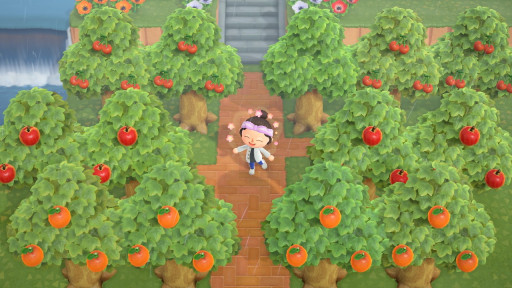
Diversifying your fruit-folio will make your island both prettier and more profitable.
So, you’ve got a shiny new island in New Horizons. Congrats! Time to become a Bellionaire! Not only is this method of money-making possible right from day 1, but if you start on day 1, it will yield you astronomically increasing profits over time, by using that money as an investment for other methods of earning that require putting cash down.
When you first found your new island town, you’ll find fruit trees all over the island. Give them a shake, and they’ll drop three pieces of your island’s native fruit, which will sell to Timmy in the Resident Services tent for 100 Bells each. However, with recent updates, there’s a new wrinkle in this old method of making money… Perfect fruit.
Perfect fruit has a golden veneer that makes it visually distinct from others of their species, and sometimes a tree will produce a perfect fruit instead of a regular one. Perfect versions sell for six times the normal amount of Bells. If you find any on day 1, though, don’t sell them… plant them! Trees planted from perfect fruit grow perfect fruit, turning this into an early game cash cow you can milk every three days for the lifetime of your island.
Here’s how to start the Bell factory rolling…
- Locate and harvest all fruit trees on your island. If you are playing solo, sell all non-perfect fruit to Timmy; otherwise, save some to trade to your friends for THEIR native fruit, if it is different from yours.
- If you do manage to swap fruit with a friend, DON’T SELL IT. Tuck it away with your perfect fruit; all of these should be planted as soon as you have access to the flimsy shovel (earliest possible on day 2). Since non-native fruits sell for 5x Bells, these will yield you much more money being planted, even if it takes 3 days to get that investment back.
- Whether harvesting your native fruit or foreign fruit, initially, you should be holding back one fruit from every 1-2 trees harvested to plant more fruit trees as soon as you have the flimsy shovel. It will really ramp up your early-game Bell income.
- The exception is non-native and perfect fruits. Save ALL perfect fruit initially (especially if it’s foreign, because the multipliers stack), and from foreign fruit harvests, you initially want to sell only one fruit out of every 1-2 harvested trees.
- Make sure that you get access to the shovel by day 2 to maximize profits (more on this in the next tip), and to allow you to take advantage of other Bell-making goodness down the road.
4) Net Profits

I’m a hustler, baby… I just wantcha ta know…
Not only is the flimsy net obtainable day 1, but it’s a great way to make money (and the key to unlocking the flimsy shovel as quickly as possible, which is your real money-making tool throughout the game). If you want to get rich quick in Animal Crossing: New Horizons, your very first 400 Bells must be spent on getting a flimsy net from Timmy at Resident Services on day 1. This is because it allows you to start catching bugs immediately.
The flimsy net allows you to catch bugs. These can be sold for Bells (some of them for quite a hefty sum), or given to Flick to craft bug models (which can also be sold for a good chunk of change). However, day 1, they serve another purpose: fulfilling Tom Nook’s bug hunting and fishing mission to get Blathers to the island.
Here’s how to make the most out of your flimsy net…
- Remember that the flimsy net can only be used ten times before it breaks. Catch ten bugs with your first net, preferably all different species. Reserve the lowest-price bugs, two or three of them, to turn in as part of your quest with Tom Nook, and sell the rest.
- In particular, be on the lookout for any bugs in the stag family, scorpions, and tarantulas, as these are all great for getting a quick influx of cash, especially early game, selling for a few thousand Bells each.
- Do not fail to complete Tom Nook’s quest on day 1; you need the shovel unlocked if you want to take advantage of the best money-making methods in this game.
Once you start getting visitors to your island, stop selling bugs to Timmy (or to Nook’s Cranny, once you’ve constructed it); instead, sell them to Flick, as he pays top dollar for bugs. I usually use the first three of any bug that I catch to get a statue from Flick, but that won’t help you profit.
3) Fishing for Funds
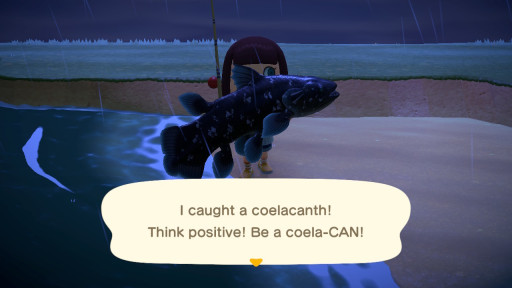
Sell it for cash!
Fishing is also possible to start day 1, as you can get the flimsy fishing rod at the same time as the flimsy net. This should be what you spend your second 400 Bells on (the net takes priority because it’s more likely to find pricey bugs than pricey fish in most seasons early game, and you can see for sure what you will get before using the item, which makes it more reliable).
Whenever you see shadows in the water, you can cast your line to land nearby, and soon, some aquatic thing will latch onto your hook. Pull it in fast, or it’ll get away. Sure, sometimes you get junk like old boots or tires, but you can also get some really nice fish. Not only can thesebe sold, but they, like bugs, are the key to the Blathers quest, and therefore, the key to the almighty shovel.
Here’s how to make big Bells from fishing…
- Remember, the flimsy rod can at best catch 10 items before breaking, and if you’re unlucky, some of that will be junk. Day 1, keep your cheapest few fish of different species to give to Tom Nook to fuilfill the Blathers quest; sell the rest.
- As a general rule, you should fish during days/times when more lucrative fish are likely to appear, and based on whether you are fishing in salt or freshwater, target different-sized shadows at different times to increase the chances of catching something pricey. Nookpedia is your friend when it comes to getting the deets on all the priciest fish.
- Like bugs, there’s a collector (named CJ, in this case) who prizes fish highly. Not only can he make you fish models that sell pretty well, but he will buy your fish for a hefty markup over what the Nook Crime Syndicate will pay (I mean… Nook’s Cranny). Once visitors are unlocked, save all fish for sale on days when CJ is showing up.
2) Diggin’ for Dinero

Who says the pandemic tanked the economy? Money grows on trees in my town!
Alright, now you’re in the big-time. If you unlocked the shovel by day 2 like I told you to do in my prior tips, you’ve officially broken the money curve. There are so many ways to make money using the shovel, it’s ridiculous, and while most of them require some time investment, the amount of Bells you can bank even during your first week is frankly insane. Just from the shovel alone, you should be netting an automatic adjusted profit of over 30k Bells daily after day 4, and over 10k per day prior to day 4. Let’s dig in.
Here’s how to make cartloads of cash with your shovel…
- See those golden holes in the ground? Dig where they are, and you’ll dig up 1k Bells. Not bad, not bad, free money is after all free… but wait! There’s more! Go to your inventory, and crate a stack of 10k Bells, and replant it in the hole left behind. Three days later, this bag of cash will yield a Money Tree with 30k Bells on it! All you had to do was wait 3 days.
- Never plant a money tree using another amount, if you can avoid it. Less invested bells means less yield, and more means a staggering 70% chance that the tree will fail to spawn the right amount of gold. The actual formula used is 3x the planted number of Bells, if successful, though. Hope RNJesus favors you if you try, though.
- Because a gold hole spawns every day, you should be hauling in a minimum of 20k a day from this method alone once you hit day 5.
- Bash rocks on your island. Each rock can be struck 8 times per day. Not only will this yield crafting materials from which you can make all kinds of lucrative items, but one of your rocks each day will randomly yield Bells instead when struck. If you can hit iteight times consecutively, it will yield 16,100 Bells total.
- When bashing rocks, make sure that all of the eight spots around it are empty of items of any kind, in case it’s the money rock.
- A new feature introduced in the 2.0 release called luck now influences this, and many other money-making tricks. On a good-luck day, your money rock will yield double money; on a bad luck day, no money rock will spawn. In addition, all of your other rocks are more likely or less likely to yield rare materials like Gold Nuggets based on luck. Note that you can only get a good luck day by talking to Katrina on Harv’s Island.
- Use the shovel to dig holes, and plant fruit. You want a wide variety of fruit trees on your island, though you should probably keep only a handful of your native trees and replace the rest with foreign fruit. Always prioritize perfect fruit, especially if foreign; trees grown from foreign fruits that are perfect quality sell for a whopping 3k Bells each, making them one of the best ongoing cash cows in the game.
- Dig up regular holes to obtain fossils. If you are a completionist, throw all of them at Blathers to start, but sell any duplicates; many of them sell for a couple grand each.
1) Turnip Tradin’
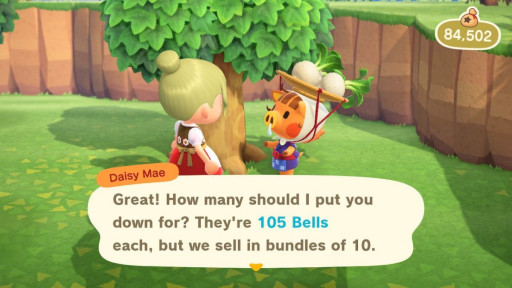
Screw eating your vegetables; flip ‘em for more money than your mama ever dreamed of!
Those of you who have played prior installments of Animal Crossing will no doubt be familiar with Joan, who runs the Stalk Market in earlier games in the franchise. Well, meet Daisy Mae, her successor, in New Horizons. This little piggy is gonna take you to the market, and I’m gonna tell you how to turn her pricey turnips into a pile of Bells so big it would make Tom Nook soil his trousers.
Strap in, this is gonna be a long one…
- Make sure to build Nook’s Cranny ASAP, as it’s the only place to sell turnips.
- Daisy shows up on Sundays, from 5 AM to 12 PM. No matter what her asking price is (it will fluctuate between 90 and 110 Bells per turnip), always buy as many turnips from her as you have Bells to pay for. She only sells in batches of ten. If you run out of pocket space, go drop your loot off at your home and come back. Keep doing this until you are flat broke.
- In between all of this, make sure you do things like harvest fruit trees, catch and sell bugs/fish, and gather/sell seashells from the seashore. The goal is to buy as many turnips as humanly possible before Daisy nips off at noon each week.
- Every morning and evening after Sunday, Nook’s Cranny will set a new price at which they will buy turnips. This price will be a random number within a random range, based upon a pricing pattern that will be unknown to you, the player, at the start of the week.
- There are four pricing patterns: High Spike, Low Spike, Decreasing, and Random.
- Of these, all but the Decreasing pattern afford you an opportunity to make a minimum of ~35% profit off of your investment, and as high as ~680% if you bought in at 90 and hit a max High Spike. Just keep checking the price each morning and night to determine what pattern you are in.
- Decreasing patterns begin with the offered price being less than 100 Bells, and it just keeps dropping. Once you clue in to a Decreasing pattern, you need to either sell all turnips immediately, as it will only get worse the longer you wait, or find a friend to visit (see below).
- There’s a loose pattern to what pattern to expect in a given week. If your pattern last week was Decreasing, you’re most likely to see a High Spike this week. If it was a Low Spike, you’re most likely to see a Random pattern this week. If it was a High Spike, youare also most likely to see a Random pattern, and if it was a Random pattern, it will probably be either a Low Spike or a High Spike.
- From the preceding, you can tell that, at all times, a Decreasing pattern is the least likely to occur. This means that, on a long enough time table, you are guaranteed fairly sizeable profits, averaging out to over 175% weekly.
- However, this number goes up significantly with more friends. Because you can sell turnips on other people’s islands, at the prices being offered at their iteration of Nook’s Cranny, you can always hope for a better price than you’re getting on your island. In fact, with a large enough group of friends willing to host visitors during their price spikes, you can actually guarantee an average of 600% profit weekly, from a statistical standpoint.
- If you are stuck playing solo, just use the simple strategy of investing every Bell you have on Sundays every week. Assuming you aren’t spending like a fiend on other things, this will, over time, guarantee you a decently high rate of return, averaging around 200%, compounded weekly. You’ll occasionally lose big, but you’ll make way more than you lose over time.
- If you are nervous about absorbing losses, you can either make sure to buy everything you’ll need in the following week prior to investing, or you can set aside half of your profits every week for a “recovery fund”... basically, ensuring that even if you had to eat big losses during a Decreasing week, you still have a big chunk of change to get restarted in the following week (especially since it’s most likely to be a High Spike).
- No matter what, make sure that you have sold all of your turnips before Nook’s Cranny closes on Saturday night, because you can’t leave them in the drop box, and any turnips that are on your island when Sunday morning rolls around will rot. However, this is also the best way to attract ants, so if you are a completionist, maybe keep one or two stacks around after your first few investment rounds just to get one to appear.
And there you have it! Follow all of these tips, and you should be well on your way to being a Bellionaire within just the first few weeks. At a conservative estimate, assuming normal cash influx and minimal “frivolous” spending, there’s no reason that you shouldn’t be able to rake in your first million within your first two weeks, with astronomically increasing income after that.
You may also be interested in:
[Top 15] Animal Crossing New Horizons Best Villagers
[Top 10] Animal Crossing New Horizons Best Villager Houses That Look Awesome

